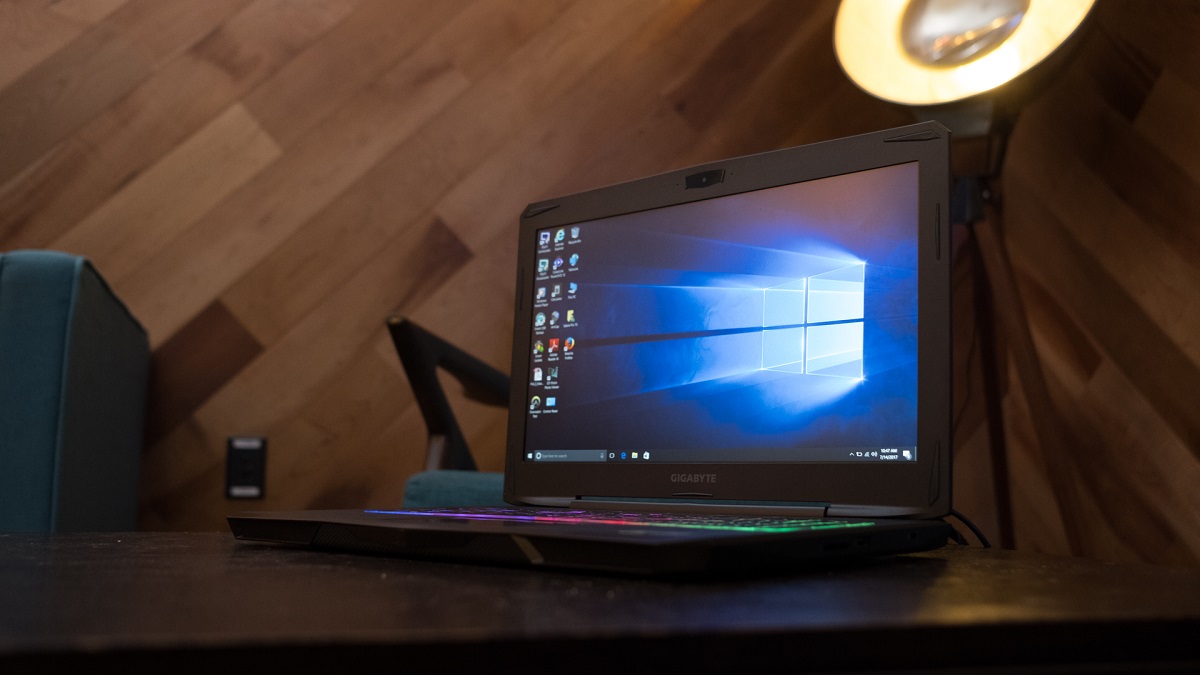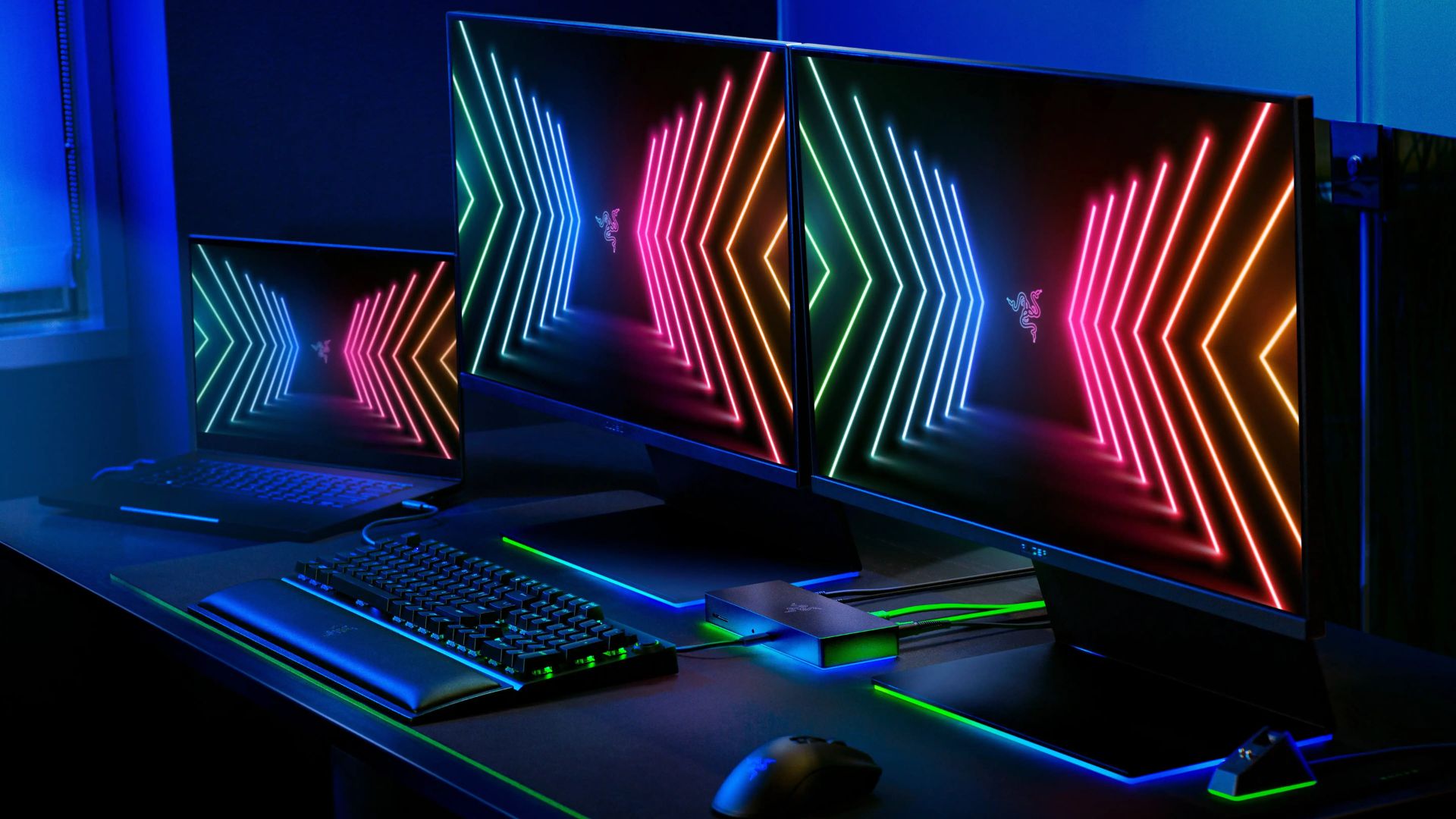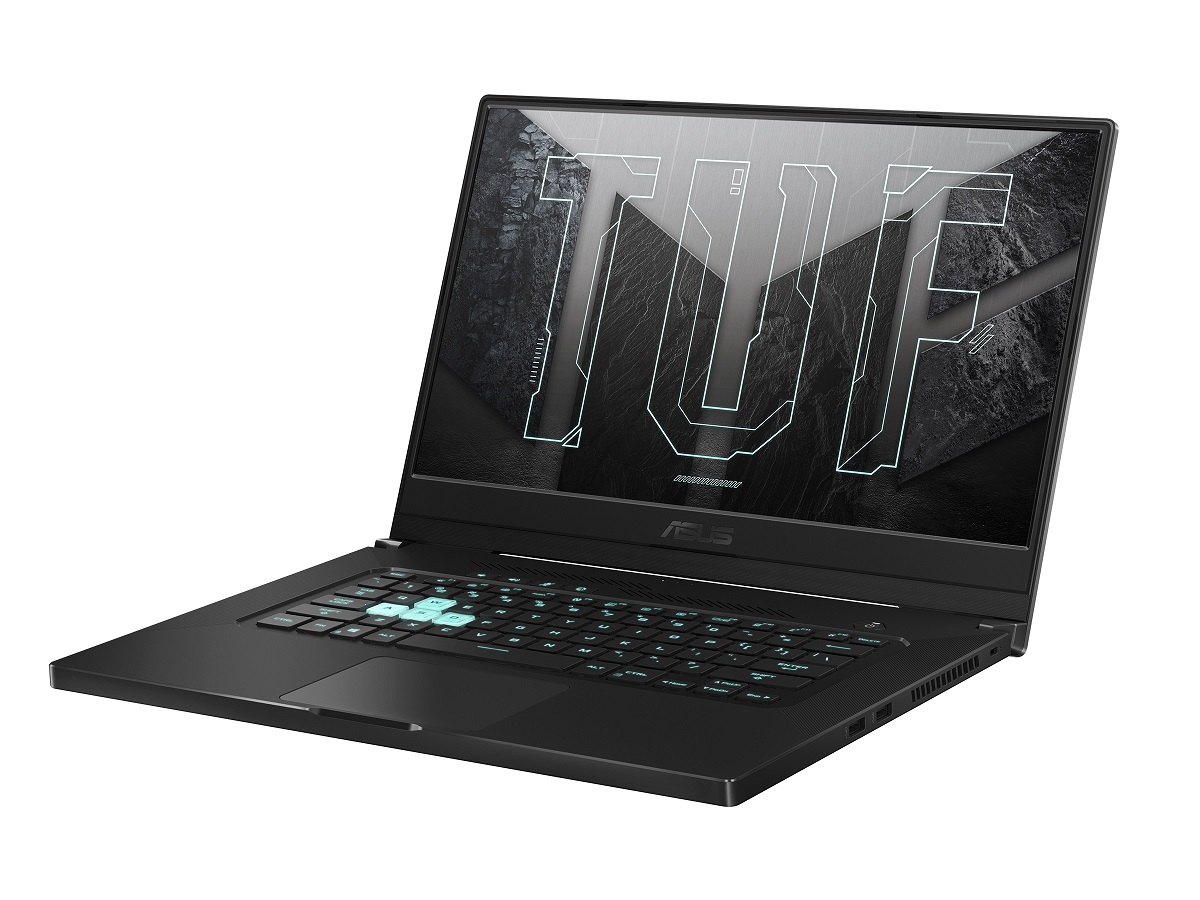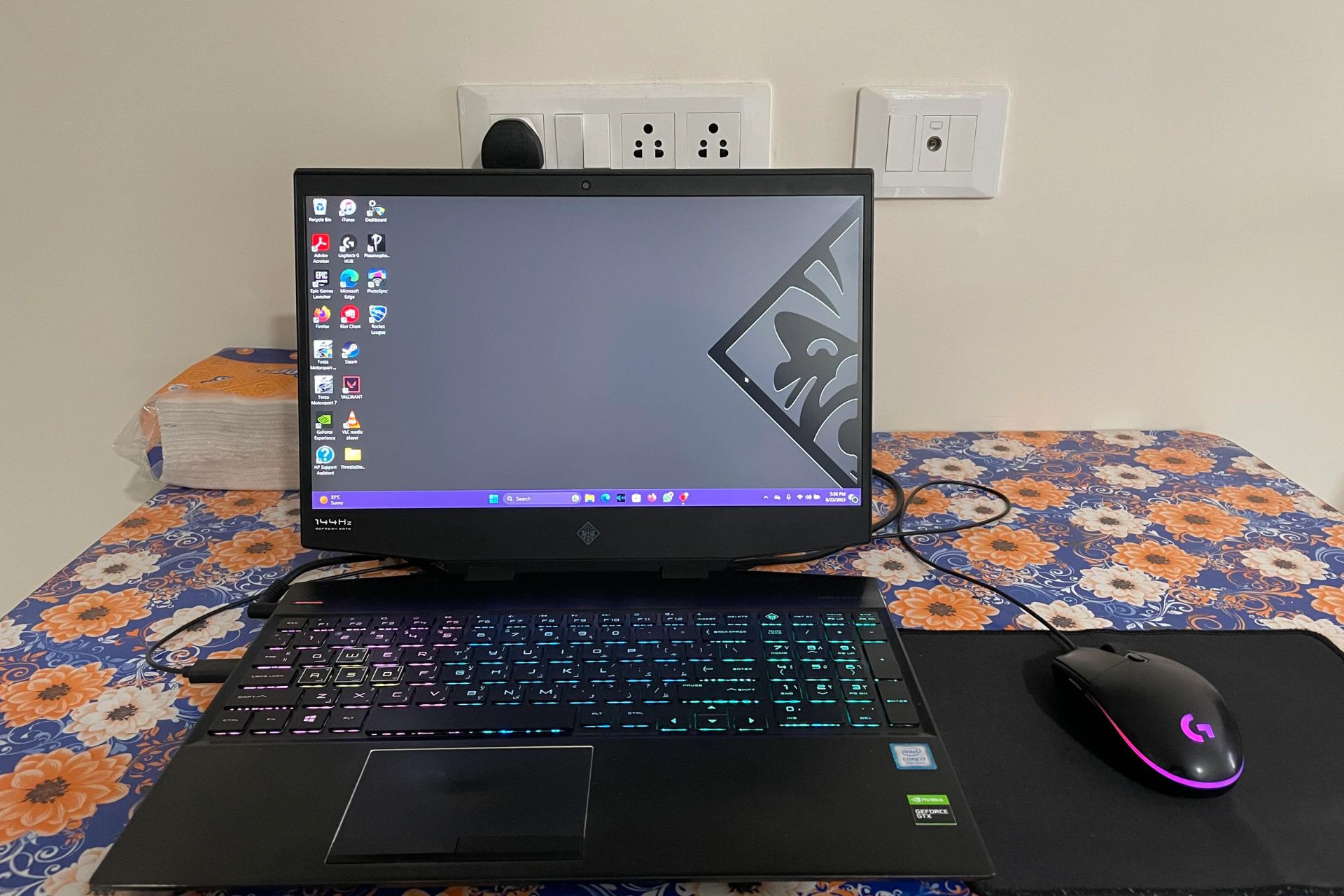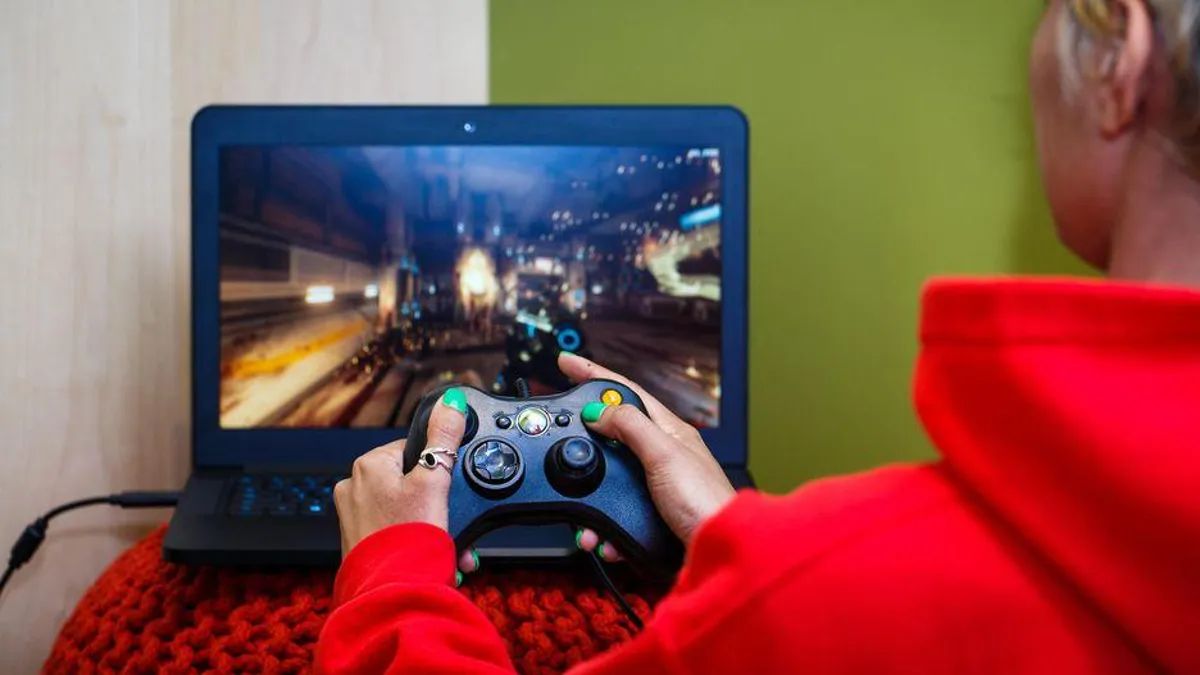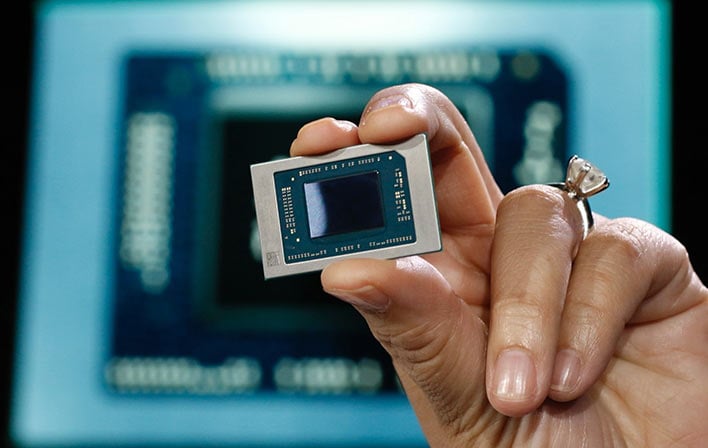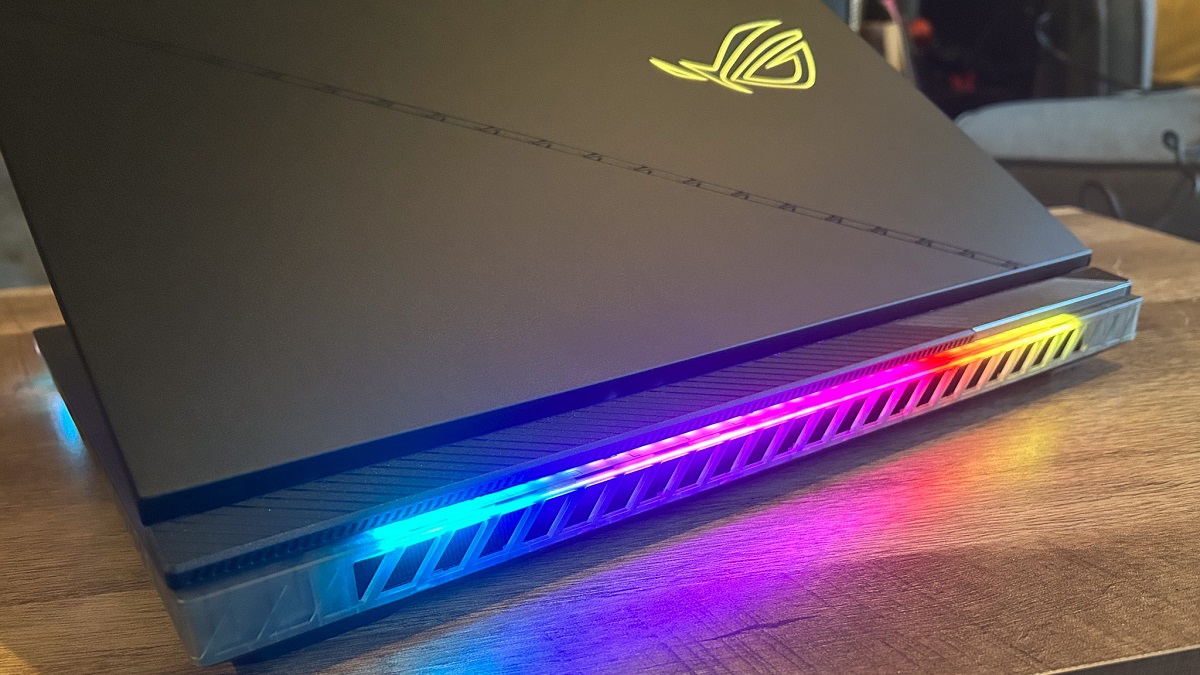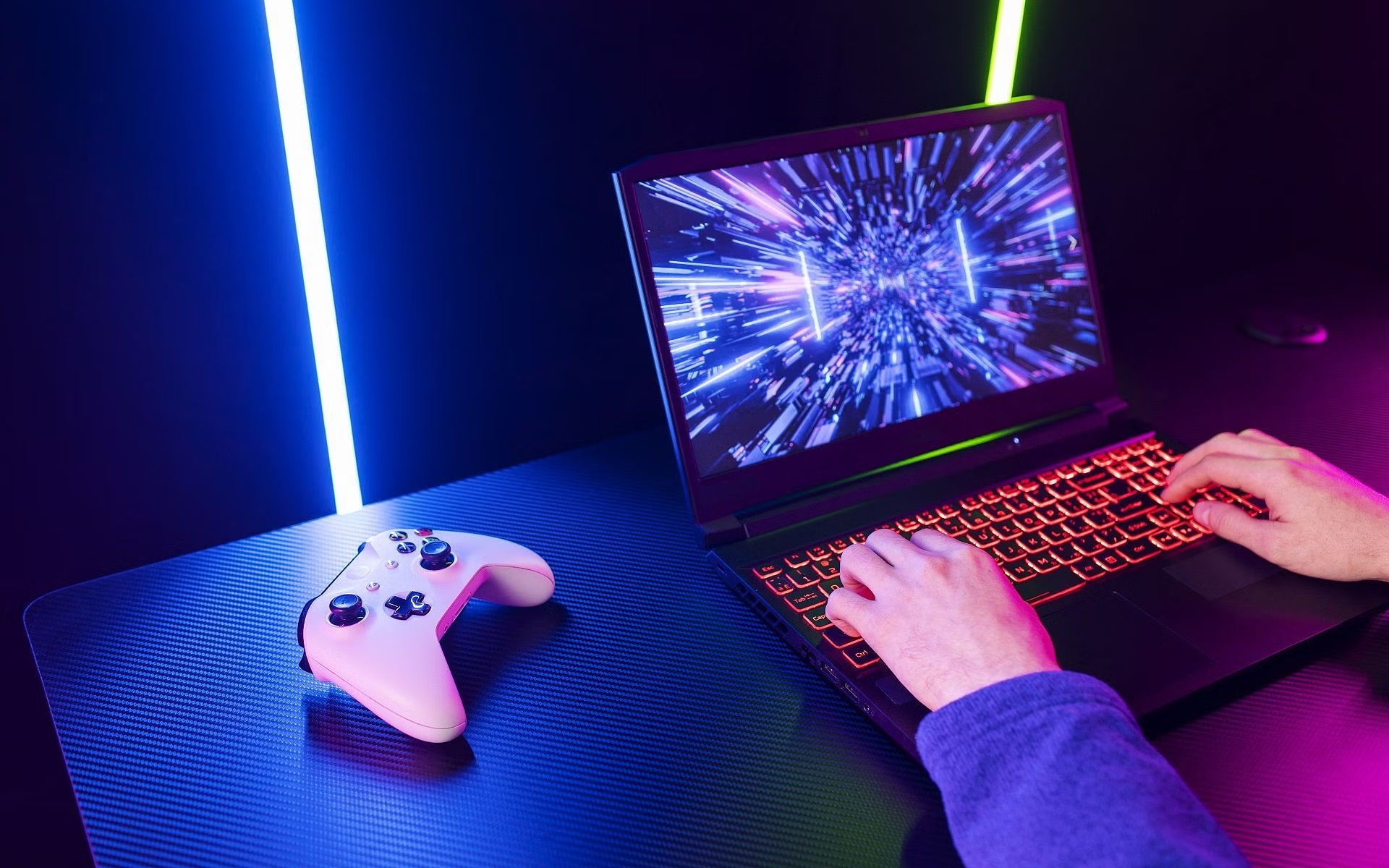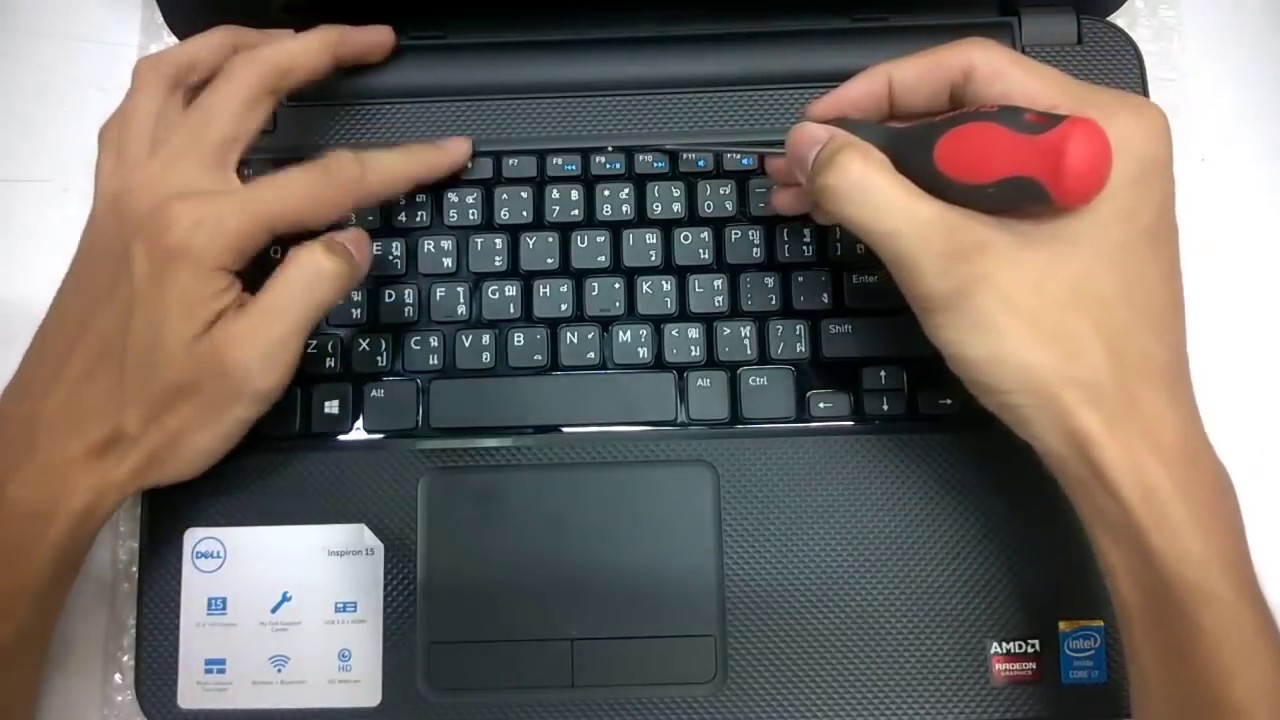Considering the Specs of Your Gaming Laptop
When it comes to gaming, having the right hardware is essential for an optimal experience. Before diving into the world of gaming on your new laptop, take some time to consider the specifications of your device. This will help you understand its capabilities and make informed decisions on game settings and performance enhancements.
First and foremost, check the processor speed and number of cores. A higher clock speed and more cores will ensure smoother gameplay and better multitasking capabilities. Popular options for gaming laptops include Intel Core i5 or i7 processors or AMD Ryzen processors.
You should also pay attention to the graphics card. A dedicated graphics card, such as NVIDIA GeForce or AMD Radeon, is a must for gaming. The higher the graphics card’s VRAM (Video RAM) capacity, the better it can handle detailed graphics and textures in games.
Another crucial aspect is the amount of RAM (Random Access Memory) your laptop has. Aim for at least 8GB of RAM for optimal gaming performance. This will allow the laptop to handle the game data and run background processes efficiently without causing lag or slowdowns.
Storage is another factor to consider. SSD (Solid State Drive) storage is highly recommended for faster load times and smooth gameplay. Look for laptops with at least 256GB SSD or a combination of SSD and HDD (Hard Disk Drive) for ample storage space.
Display size and resolution also play a significant role in gaming. A larger screen size, such as 15.6 inches or more, can enhance your gaming experience. Additionally, choose a laptop with a higher resolution, such as Full HD (1920×1080) or even 4K, for crisp visuals and immersive gameplay.
Lastly, don’t overlook the importance of a good cooling system. Gaming laptops can generate a lot of heat during intense gameplay sessions. Make sure your laptop has proper cooling mechanisms like powerful fans and heat sinks to prevent overheating and performance throttling.
Taking all these specs into consideration will help you determine the capabilities and limitations of your gaming laptop. This knowledge will assist you in making informed decisions when it comes to game settings, performance tweaks, and choosing games that your laptop can handle. So, take some time to familiarize yourself with your laptop’s specifications, and get ready to embark on an exciting gaming journey.
Setting Up Your Gaming Laptop
Congratulations on your new gaming laptop! Now it’s time to set it up and get ready for some gaming action. Follow these steps to ensure a smooth and optimized setup process.
1. Start by connecting your laptop to a power source. Make sure the battery is fully charged or connect the power adapter for uninterrupted gaming sessions.
2. Once powered on, you might be prompted to set up your operating system. Follow the on-screen instructions to complete the initial setup process. Make sure to choose your preferred language, time zone, and privacy settings.
3. Next, connect your laptop to the internet. Most gaming laptops have built-in Wi-Fi connectivity, but if you prefer a wired connection, you can use an Ethernet cable. This will ensure a stable and reliable connection for online gameplay.
4. It’s essential to keep your gaming laptop updated with the latest software and firmware. Check for Windows or macOS updates and install them to benefit from performance improvements and security patches.
5. Install a reliable antivirus software to protect your gaming laptop from malware and viruses. Choose a reputable antivirus program and keep it updated to defend against potential threats.
6. Personalize your laptop by customizing your desktop background and theme. This will make your gaming experience more enjoyable and add a personal touch to your device.
7. Create user accounts to ensure separate profiles for each user of your gaming laptop. This will allow you to customize settings and manage game progress individually.
8. Set up a backup system to protect your valuable game files and data. Consider using cloud storage or an external hard drive to regularly back up your game saves and important documents.
9. Install essential software and applications for gaming. This includes gaming platforms like Steam or Epic Games Store, as well as communication apps like Discord to connect with fellow gamers.
10. Finally, organize your game library by creating folders or categories. This will make it easier to navigate through your collection and find the game you want to play without any hassle.
By following these steps, you’ll have your gaming laptop set up and ready to deliver a seamless gaming experience. So, take your time to go through the setup process, ensuring that everything is in order. Now, it’s time to dive into the world of gaming and embark on exciting virtual adventures!
Installing and Updating Drivers
To ensure optimal performance and compatibility with your gaming laptop, it’s crucial to install and regularly update the necessary drivers. Drivers act as essential software components that facilitate communication between your hardware and operating system. Follow these steps to install and update drivers on your gaming laptop.
1. Identify the manufacturer and model of your gaming laptop. This information can usually be found on the laptop’s packaging or in the system information settings.
2. Visit the manufacturer’s website and navigate to the support or drivers section. Look for the drivers specifically designed for your laptop’s model and operating system.
3. Choose the appropriate drivers to download. Pay close attention to the version number and ensure it corresponds to the latest release. It’s recommended to start with essential drivers such as graphics, audio, and network drivers.
4. Once downloaded, run the driver installer and follow the on-screen instructions to complete the installation process. It’s important to close any running applications during the installation to avoid conflicts.
5. After installing the drivers, restart your laptop to ensure the changes take effect. This will also help in detecting any new hardware or updates that require a reboot.
6. To ensure your drivers are up to date, it’s advisable to use driver update software. There are various reliable options available, such as Driver Booster or Driver Easy, which can scan your system and automatically update outdated drivers.
7. Alternatively, you can manually update drivers by visiting the manufacturer’s website periodically. Check for any driver updates related to your gaming laptop’s hardware components and download/install accordingly.
8. Keep in mind that graphics card drivers are particularly important for gaming performance. Graphic driver updates often include optimizations for new game releases, bug fixes, and performance improvements. It’s recommended to check for graphics card driver updates regularly, especially before playing new games.
9. Lastly, it’s essential to uninstall any old or unnecessary drivers to maintain a clean and efficient system. Use the Device Manager or driver management software to identify and remove outdated drivers that are no longer needed.
By regularly installing and updating drivers, you ensure that your gaming laptop operates at its full potential, providing a smooth and immersive gaming experience. Remember to check for driver updates periodically, especially before playing new games, to take advantage of performance enhancements and compatibility improvements.
Choosing and Downloading Your Gaming Library
Now that your gaming laptop is set up and drivers are installed, it’s time to choose and download your gaming library. With so many options available, it can be overwhelming to decide which games to play. Follow these steps to curate a collection that caters to your gaming preferences and interests.
1. Research and explore different game genres and themes. Consider what type of games you enjoy the most – whether it’s action, adventure, strategy, role-playing, or sports. This will help narrow down your options and focus on games that align with your interests.
2. Read reviews and watch gameplay videos to get a better understanding of each game’s mechanics, graphics, and overall experience. You can find reviews on gaming websites and platforms, as well as video game-focused YouTube channels.
3. Take advantage of gaming platforms such as Steam, Epic Games Store, or GOG.com, which offer a wide range of games for purchase and download. These platforms often have sales and discounts, allowing you to build your gaming library without breaking the bank.
4. Consider subscribing to gaming services like Xbox Game Pass, PlayStation Now, or EA Play. These services provide access to a vast library of games for a monthly fee, allowing you to discover new titles and play a variety of games without the need for individual purchases.
5. Pay attention to system requirements before purchasing or downloading a game. Make sure your gaming laptop meets or exceeds the minimum specifications to ensure smooth gameplay.
6. Take advantage of free-to-play games available on various platforms. These games allow you to enjoy gaming without any upfront cost and can be a great way to discover new titles.
7. Consider joining online gaming communities, forums, or subreddits related to your favorite games or genres. These communities can provide recommendations and valuable insights into popular and highly regarded games within the gaming community.
8. Once you have chosen the games you want to play, proceed to the respective platform or website to download them. Follow the instructions provided by the platform or game distributor to complete the download and installation process.
9. After downloading your gaming library, organize your games by creating folders or categories based on genres, play styles, or personal preferences. This will make it easier to navigate and locate your games when you’re ready to play.
Remember, building your gaming library is an ongoing process. Stay updated with new game releases and explore different genres to keep your gaming experience fresh and exciting. So, take your time to choose the games that resonate with you and embark on thrilling virtual adventures with your new gaming laptop.
Configuring the Graphics Settings
To truly optimize your gaming experience on your new laptop, it’s important to configure the graphics settings of your games. This will allow you to strike the perfect balance between visual quality and smooth performance. Follow these steps to configure the graphics settings for an optimal gaming experience.
1. Launch the game you want to configure and navigate to the graphics settings menu. This can usually be found in the game’s settings or options menu.
2. Start with the resolution settings. Choose a resolution that matches your laptop’s screen resolution and aspect ratio. Opt for a higher resolution if your laptop can handle it without affecting performance significantly.
3. Adjust the graphics quality settings. Most games offer presets such as Low, Medium, High, or Ultra. Start with the preset that matches your laptop’s specifications and gradually increase or decrease the settings based on your preference and performance. Keep an eye on performance indicators like FPS (frames per second) or visual stutters to find the right balance.
4. Pay attention to individual graphics settings like textures, shadows, anti-aliasing, and post-processing effects. These settings impact visual quality and performance differently. Experiment with different settings to find the right balance for your gaming laptop.
5. Consider enabling V-Sync (Vertical Sync) to synchronize your game’s frame rate with your monitor’s refresh rate. This can prevent screen tearing but may introduce slight input lag, so it’s a personal preference.
6. Explore advanced settings related to lighting, reflections, and particles. These settings can have a significant impact on visual fidelity but can also affect performance. Adjust them based on your laptop’s capabilities and desired visual quality.
7. Some games offer specific optimization features such as dynamic resolution scaling or adaptive graphics settings. Enable these features if available, as they can automatically adjust the graphics settings based on the workload to maintain a smooth performance.
8. Test the configured graphics settings by playing the game for a while. Pay attention to performance and visual quality. If you encounter any significant performance issues or visual glitches, revisit the settings and make necessary adjustments.
9. Save your graphics settings as a preset if the game allows it. This will allow you to quickly load your preferred settings in the future without going through the configuration process again.
10. Regularly check for game updates, as developers often release patches or updates that include performance optimizations and graphics enhancements. Keeping your games up to date can improve both performance and visual quality.
By configuring the graphics settings, you can ensure that your games run smoothly and look visually stunning on your gaming laptop. Take the time to experiment with different settings and find the balance that suits your preferences and hardware capabilities. Now, immerse yourself in the breathtaking worlds of your favorite games and enjoy a truly optimized gaming experience.
Enhancing Your Gaming Experience with Accessories
While your gaming laptop provides a solid foundation for gaming, there are several accessories that can further enhance your gaming experience. These accessories can improve comfort, precision, audio quality, and immersion. Consider these options to take your gaming experience to the next level.
1. Gaming Mouse: Invest in a high-quality gaming mouse that offers customizable buttons, adjustable DPI (dots per inch), and a comfortable ergonomic design. This will improve your aiming precision and responsiveness in games.
2. Gaming Keyboard: Upgrade to a mechanical gaming keyboard for a satisfying typing experience and precise input during gameplay. Look for features like programmable keys, backlighting, and anti-ghosting to enhance your gaming performance.
3. Gaming Headset: A good gaming headset with surround sound capabilities and a built-in microphone can greatly enhance your gaming experience. It allows for immersive audio, clear communication with teammates, and reduces outside distractions.
4. Gaming Chair: Consider investing in a comfortable gaming chair that provides proper lumbar support and adjustable features. A comfortable chair can prevent fatigue during long gaming sessions and improve overall posture.
5. Game Controllers: If you prefer console-style gaming, invest in a gamepad or gaming controller that is compatible with your gaming laptop. This will allow for a more familiar and comfortable gaming experience, especially for games that are best played with a controller.
6. External Storage: Expand your storage capabilities with an external hard drive or SSD. This will allow you to store and access larger game libraries without sacrificing the performance of your gaming laptop.
7. Gaming Mouse Pad: Upgrade to a high-quality gaming mouse pad that offers a smooth and consistent surface. A larger mouse pad will provide more space for precise mouse movements and can improve your gaming accuracy.
8. Cooling Pad: Keep your gaming laptop running cool with a dedicated cooling pad. These pads come with built-in fans that help dissipate heat, preventing thermal throttling and ensuring optimal performance during intense gaming sessions.
9. Webcam and Microphone: If you enjoy streaming or multiplayer gaming, consider investing in a high-quality webcam and microphone setup. This will allow you to interact with your audience or teammates effectively and provide a more engaging gaming experience.
10. Gaming Monitor: Upgrade to a larger, high-resolution gaming monitor for a more immersive visual experience. Look for features like fast response times, high refresh rates, and adaptive sync technologies for smooth and tear-free gaming visuals.
Adding these accessories to your gaming setup can greatly enhance your overall experience. Remember to choose accessories that align with your gaming preferences and budget. Whether it’s improving comfort, precision, or immersion, these accessories will elevate your gaming sessions to new heights of enjoyment.
Optimizing Your Laptop’s Performance
To ensure smooth and lag-free gaming, it’s important to optimize your gaming laptop’s performance. By following these optimization tips, you can make the most out of your hardware capabilities and ensure a seamless gaming experience.
1. Keep your laptop clean: Regularly clean the dust and debris from your laptop’s vents and fans to prevent overheating. Overheating can lead to performance throttling, affecting your gaming experience. Use compressed air or a soft brush to remove dust buildup.
2. Close unnecessary background applications: Close any unnecessary applications running in the background to free up system resources for gaming. This includes programs like web browsers, music players, and other resource-intensive applications.
3. Disable startup programs: In the Task Manager or system settings, disable any non-essential programs that automatically start with your laptop. These programs can slow down your laptop’s startup time and consume system resources.
4. Update your graphics drivers: Regularly update your graphics card drivers to ensure compatibility with the latest games and performance optimizations. Check the manufacturer’s website for the latest driver updates and install them accordingly.
5. Optimize in-game settings: Experiment with different graphics settings within each game to find the right balance between visual quality and performance. Adjusting features like anti-aliasing, shadows, and post-processing effects can significantly impact performance.
6. Monitor your system temperatures: Install software to monitor your CPU and GPU temperatures during gaming sessions. If temperatures are consistently high, consider using a laptop cooling pad or optimizing your laptop’s ventilation.
7. Adjust power settings: In the power settings of your laptop, choose a power plan optimized for performance. This can boost your laptop’s performance by prioritizing system resources for gaming.
8. Defragment your hard drive: Regularly defragment your hard drive to optimize file storage and retrieval. This can improve loading times and overall system performance.
9. Upgrade your laptop’s hardware: Consider upgrading certain hardware components like RAM or storage to improve performance. Adding more RAM or switching to an SSD can significantly enhance your laptop’s gaming capabilities.
10. Scan for malware and viruses: Regularly perform scans with your antivirus software to detect and remove any malware or viruses that might affect your laptop’s performance. Update your antivirus software regularly for maximum protection.
By following these performance optimization tips, you can ensure that your gaming laptop runs at its peak performance, delivering smooth and enjoyable gaming experiences. Remember to regularly maintain and update your laptop, as well as customize settings to suit your specific gaming needs.
Protecting Your Gaming Laptop
Keeping your gaming laptop safe and secure is crucial to ensure its longevity and protect your valuable gaming data. Follow these essential tips to safeguard your gaming laptop from potential threats and ensure a worry-free gaming experience.
1. Use a reliable antivirus software: Install a reputable antivirus solution on your gaming laptop to defend against malware, viruses, and other online threats. Regularly update your antivirus software to stay protected against the latest threats.
2. Enable automatic software updates: Keep your operating system, drivers, and gaming applications up to date by enabling automatic updates. This ensures that you have the latest security patches and performance improvements.
3. Be cautious with downloads: Only download games, updates, and mods from trusted sources. Avoid downloading files from unknown websites or clicking on suspicious links, as these can be sources of malware and other harmful software.
4. Use strong and unique passwords: Protect your gaming accounts by using strong and unique passwords. Avoid common passwords and consider using a password manager to securely store your login credentials.
5. Enable two-factor authentication (2FA): Add an extra layer of security to your gaming accounts by enabling 2FA. This typically involves entering a verification code sent to your mobile device in addition to your password.
6. Use a virtual private network (VPN): Consider using a VPN when gaming online to enhance your privacy and protect your data from potential hackers. A VPN encrypts your internet connection, keeping your online activities secure.
7. Be cautious on public Wi-Fi networks: Avoid connecting to unsecured public Wi-Fi networks when gaming, as these networks can be vulnerable to attacks. If you must connect to a public network, use a VPN for added protection.
8. Backup your game saves and data: Regularly back up your game saves and important files to an external hard drive or cloud storage. This ensures that even if your laptop is damaged or compromised, your progress isn’t lost.
9. Secure your physical surroundings: When gaming in public places or shared spaces, be mindful of your physical surroundings. Keep an eye on your laptop and ensure it is secure to prevent theft or unauthorized access.
10. Consider laptop security accessories: Invest in a laptop lock or security cable to physically secure your gaming laptop when you’re away from it. These accessories can deter potential thieves and provide added peace of mind.
By implementing these protection measures, you can safeguard your gaming laptop and maintain the integrity of your gaming experience. Stay vigilant and proactive in keeping your laptop secure to enjoy uninterrupted gaming sessions without any worries.
Exploring Online Communities for Gamers
Gaming is not just about playing games; it’s also about connecting with a community of like-minded individuals who share your passion for gaming. Engaging with online communities can enhance your gaming experience, provide valuable insights, and create lasting friendships. Here’s how you can explore and benefit from online communities for gamers.
1. Join gaming forums: Participate in online forums dedicated to gaming discussions. These forums offer a platform to connect with fellow gamers, seek advice, share experiences, and stay updated on the latest gaming news and trends. Popular gaming forums include Reddit’s r/gaming and GameFAQs.
2. Connect on social media: Follow gaming influencers, game developers, and gaming communities on social media platforms like Twitter, Facebook, and Instagram. Engage in discussions, share your gaming experiences, and stay updated on game releases, updates, and events.
3. Join gaming-specific subreddits: Reddit hosts an array of gaming communities, known as subreddits. Subscribe to subreddits related to your favorite games or gaming genres to connect with fellow enthusiasts, share tips and tricks, and participate in discussions tailored to your interests.
4. Participate in online gaming competitions and events: Many gaming communities organize online tournaments and events. Participating in these events not only allows you to showcase your skills but also provides an opportunity to connect with other gamers who share your competitive spirit.
5. Explore game-specific communities: Game developers often create official forums or community spaces for their games. Join these communities to connect with other players, discuss gameplay strategies, provide feedback, and receive updates directly from the developers.
6. Engage in live streaming platforms: Platforms like Twitch and YouTube Gaming offer an immersive gaming experience by allowing you to watch live gameplay streams and interact with streamers and fellow viewers through chat. Participate in chat discussions and build connections within the streaming community.
7. Join multiplayer gaming communities: If you enjoy multiplayer gaming, explore dedicated communities for specific games. These communities provide platforms to find teammates, join clans or guilds, and organize cooperative or competitive gaming sessions.
8. Attend gaming conventions and expos: Explore local or online gaming conventions and expos where gamers come together to celebrate the gaming culture. These events offer opportunities to meet fellow gamers, try out new games, and engage in various gaming-related activities.
9. Contribute to gaming wikis and fan sites: Become an active contributor to gaming wikis and fan sites. Share your knowledge, write guides, and collaborate with other gamers to create comprehensive resources for the gaming community.
10. Be respectful and embrace diversity: When engaging with online gaming communities, remember to be respectful, inclusive, and open-minded. Embrace the diversity of opinions and perspectives within the gaming community, and foster positive and constructive discussions.
By exploring and actively participating in online gaming communities, you can expand your gaming network, gain new insights, and forge meaningful connections with other gamers. So, dive into these communities, share your love for gaming, and enhance your gaming experience through the power of connection.
Creating a Gaming Schedule
While gaming can be an immersive and enjoyable hobby, it’s important to strike a balance with other responsibilities and activities in your life. Creating a gaming schedule can help you manage your time effectively, prioritize your commitments, and ensure that gaming remains a healthy and enjoyable part of your routine. Here’s how you can create a gaming schedule that works for you.
1. Assess your existing commitments: Start by evaluating your current obligations, such as work, school, or family responsibilities. Determine how much time you have available for gaming without neglecting these essential aspects of your life.
2. Set realistic gaming goals: Determine how much time you want to dedicate to gaming each day or week. Be realistic about the amount of time you can realistically commit to gaming while still maintaining a healthy balance in other areas of your life.
3. Prioritize your activities: Identify your priorities and allocate time for them accordingly. This could include time for work/study, time with family and friends, self-care activities, and other hobbies or interests.
4. Create a schedule: Use a calendar or planner to create a gaming schedule that aligns with your commitments. Allocate specific blocks of time for gaming, taking into account your energy levels and when you’re most likely to be able to focus and enjoy your gaming sessions.
5. Be flexible: Life is dynamic, so it’s essential to be flexible with your gaming schedule. Accept that unexpected events or changes in your routine may require adjustments to your gaming time. Adapt and make necessary changes to accommodate new circumstances as they arise.
6. Set boundaries: Establish boundaries around your gaming time to prevent it from encroaching on other important aspects of your life. Communicate these boundaries to your family and friends, ensuring they understand and respect your gaming schedule.
7. Avoid excessive gaming: While gaming can be enjoyable, it’s important to maintain a healthy balance. Avoid excessive gaming that may interfere with your sleep, physical health, or relationships. Set time limits for your gaming sessions and stick to them.
8. Use gaming as a reward: Incorporate gaming into your day as a form of reward or relaxation after completing your tasks and responsibilities. This can serve as motivation to stay focused and productive throughout the day.
9. Engage in variety: Don’t limit yourself to just one game. Explore different genres and gaming experiences to keep your gaming sessions fresh and exciting. Your gaming schedule can include dedicated time for trying out new games or revisiting old favorites.
10. Evaluate and adjust: Regularly evaluate how well your gaming schedule is working for you. Assess if it’s helping you maintain balance and meet your goals. Make adjustments as needed to ensure your gaming schedule aligns with your changing priorities and lifestyle.
By creating a gaming schedule, you can enjoy gaming while still managing other important aspects of your life. It allows you to maintain a healthy balance and make the most out of your gaming sessions. So, take the time to create a schedule that works for you and embrace gaming as a fulfilling and enjoyable part of your routine.







